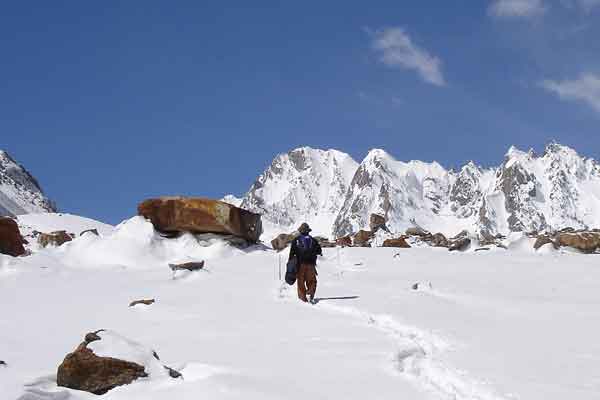News

Climate change, glacier meltwater: Geologist Umesh Haritashya among group publishing findings in Science
University of Dayton geologist Umesh Haritashya was among the researchers whose examination of how climate change and glacier melting affect the water supply for more than a billion people was published in Science June 10.
Haritashya, who has researched Himalayan glaciers for two decades and made important contributions such as a new hydrological model and automated glacier mapping tool, analyzed the impact of lakes and debris on glaciers, and overall glacier dynamics for this paper.
“The new work is the most thorough review ever of the region’s glacier-fed rivers. Our research team gathered the results of nearly 250 scholarly papers to arrive at a more accurate understanding — something approaching a consensus — of the links between climatic warming, precipitation change and glacier shrinkage,” said Jeff Kargel of the Planetary Science Institute, an author of the paper.
While finding the links among climatic warming, precipitation change and glacier shrinkage, the group realized a one-size-fits-all-approach to how climate change will affect each location will not work in the Himalayan corridor, because it is spread across many countries, and is home to the tallest mountain peak and vast topographic and climatic variations.
“Glacier meltwater, and therefore climate change impacts on glaciers, are crucial in the Indus basin. The Ganges and Brahmaputra basins are more dominated by monsoonal rains,” said Mohd Farooq Azam, the study's lead author and assistant professor of civil engineering at the Indian Institute of Technology Indore.
In addition, the study also helped the group identify and address gaps in scientific knowledge of climate change. Questions include: how does snowfall and glacier health vary between river valleys, how long will glaciers survive, and why are some glaciers advancing.
"Changes in the runoff pattern from rain and glacier melting is expected to contribute heavily to extreme runoff and resultant flash floods, landslides and debris flows," Haritashya said. "Since millions of people living in the high elevation mountain valleys can face major impacts with climate-change-driven snow and glacier melt, and associated hazards, understanding climate change impacts on Asian water towers is really important to humanity."
Haritashya added this review will be helpful to policymakers and others who work in watershed resources management for agriculture, hydropower, drinking water and sanitation, among many other issues facing developing economies. It also will be useful to scientists as they fill gaps in knowledge through their future research.
Along with this study, Haritashya and his research team at UD have secured more than $3 million in research grants, primarily from NASA, to examine climate change impact on high mountain glaciers.
As part of a separate research team, Haritashya helped investigate the landslide and flood in India in February that destroyed two hydropower plants and left more than 200 dead or missing. Science also published those findings in a separate research article on June 10.
For more information, contact Haritashya at uharitashya1@udayton.edu. For interviews, contact Shawn Robinson, associate director of news and communications, at srobinson1@udayton.edu.
